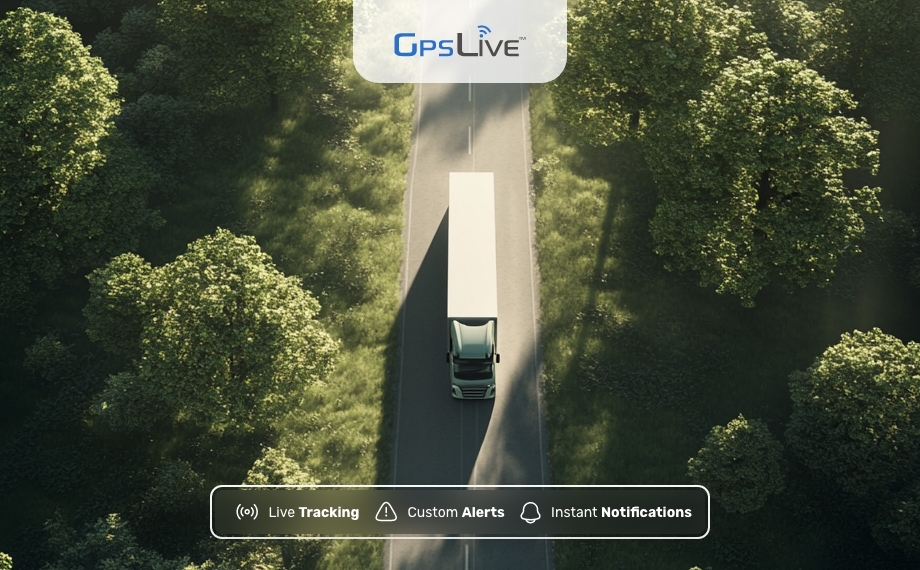If you’re in the fleet business of eCommerce delivery, you know how vital each delivery is. And with Amazon introducing same-day delivery, it can be stressful for delivery partners to meet customer expectations.
This means fleet businesses must ensure no breakdowns, avoid traffic, smartly choose roads, and plan deliveries. While vehicles form one of the crucial elements of fleet management, drivers or delivery personnel are essential to ensure on-time deliveries.
They have to drive responsibly, take swift actions during jobs, respond to issues, coordinate with customers, etc. But how can they perform efficiently and ensure better customer service? Enter fleet tracking software.

Many fleet companies are relying on fleet tracking solutions to improve job dispatching. Fleet tracking devices provide real-time insights about vehicle location, traffic, speed, delivery status, and much more. They also provide real-time alerts to dispatchers, helping them plan daily trips smartly and ensure operations are on track.
What is Fleet Dispatch Management?
Fleet dispatch management helps direct and coordinate fleets to carry out various tasks. It involves optimising the allocation of vehicles, drivers, and resources to ensure timely and cost-effective deliveries or service delivery. From route planning and assigning jobs to customer deliveries, dispatch management is critical for the growth of the fleet business.
With the help of fleet tracking, dispatchers can achieve optimised dispatch management and increase business efficiency. Having data at your fingertips enables dispatchers to make smarter decisions and avoid any mishaps.
Let’s see how fleet tracking software improves dispatch management.
Route Planning
Route planning is one of the most critical job aspects for a dispatcher. Overlooking minor details while planning routes can hamper drivers’ productivity and overall business. Indeed, manually doing this task takes time and effort. Thanks to fleet tracking software, dispatchers can plan routes systematically with minimal effort.
Fleet tracking software analyses traffic, resource availability, weather conditions, roadblocks, and other factors required to plan delivery routes. This ensures the fastest and shortest routes, streamlining delivery operations. Moreover, route optimisation can also help manage new deliveries effectively as the software analyses the real-time location of drivers and dispatches the nearest driver to the job site.
It helps save time, improve drivers’ productivity, and help achieve more deliveries in a day. Plus, optimised routes reduce engine idling, save fuel and other related costs.
Improved Communication
With multiple deliveries in a day, chances are high that drivers can get confused with some packages that demand more cooperation from dispatchers. The advent of mobile phones helped tackle this challenge but also gave rise to other issues like distracted driving. Fleet tracking software became a permanent solution to avoid hassles and ensure communication enhancement.
As the software fosters real-time tracking, it also fosters a constant communication channel between drivers and dispatchers. For example, the tracker instantly sends a notification if the driver is speeding. Or, the tracker will alert the dispatcher if the driver takes an unauthorised route. Real-time data offer maximum insights and improve communication and coordination between back office and on-road activities.
Moreover, as the fleet tracker streamlines the majority of fleet management tasks, it eliminates the need for drivers to contact dispatchers for anything. The tracker makes everything quite straightforward for drivers to follow, preventing discrepancies and delivery problems.
Enhance Customer Experience
The ultimate objective of delivery companies is to provide an enjoyable customer experience. This depends on timely deliveries and the ability to share delivery details with customers as they want to track and know the ETAs of their packages. All this is possible with fleet tracking solutions.
The fleet tracking device tracks and fetches data in real-time that helps analyse accurate ETAs. With the help of fleet management software, dispatchers can send delivery updates to customers easily without hassle, improving transparency and winning customer trust.
Furthermore, optimised routes, better resource allocation, improved job dispatching, etc., can help fleet companies with on-time delivery. The better the service, the more customer loyalty.
Reports and Dispatch Analytics
When you have access to data about business performance, you can understand where and what changes can be made to increase dispatch efficiency. When integrated with fleet management software, a fleet tracking device provides insights into driver productivity, vehicle performance, fuel consumption, and much more.
For example, increased engine idling is a sign of more fuel consumption, increasing expenses. Reporting capabilities can reduce unwanted costs, improve dispatching operations, and stay profitable.
Summing Up
Effective fleet dispatch management enhances operational efficiency, reduces costs, optimises resource utilisation, ensures timely deliveries, and improves customer service. Modern technology, like fleet tracking devices and advanced software solutions, plays an essential role in streamlining dispatching processes and achieving better outcomes for fleet operations.

